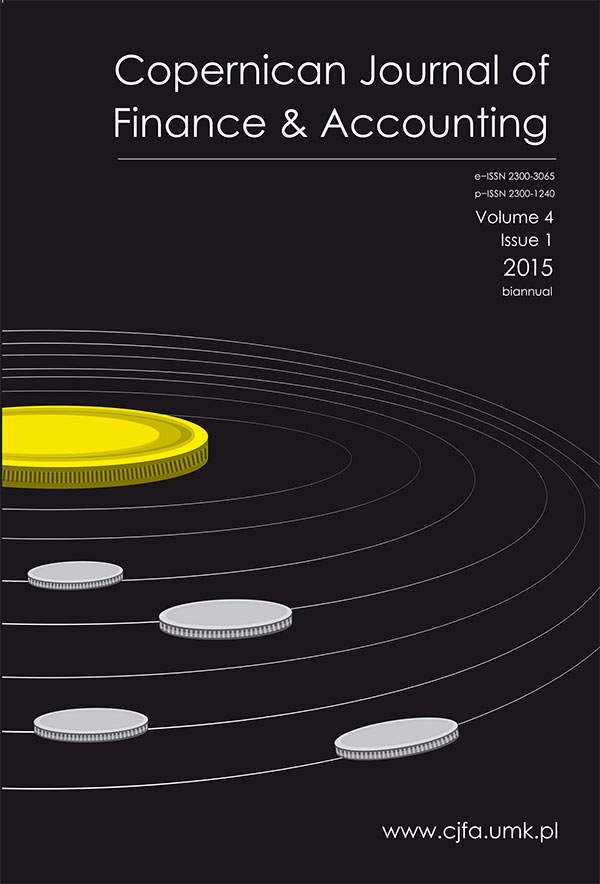Comparative analysis of the bail-in tool
DOI:
https://doi.org/10.12775/CJFA.2015.007Słowa kluczowe
bail-in, resolution, liquidation of financial entitiesAbstrakt
The article aims to analyse selected components of one of the tools of orderly restructuring and liquidation of financial institutions, namely the conversion of equity or debt write-down tool (bail-in). The presented breakdown shows the variety of approaches to defining bail-in and points of convergence of these approaches. One of the key findings highlights the global shift in the approach to the issue of restructuring and liquidation of financial institutions and indicates a new path undertaken by public authorities, which allows for allocating costs to the owners of financial institutions. Governments should prepare a legal framework for the effective use of this tool before the necessity of its application becomes manifest. The study is based on a comparative review of legal frameworks in selected countries as well as reports, studies, publications and practical experience of countries that have applied bail-in.
Bibliografia
BoE (2011), Financial Services Act.
Bank of Slovenia (2013), Banking Act.
BFG (2014), High Level Seminar on Bail-in and Deposit Insurance System Interaction, Warsaw.
BoE, FDIC (2012), Resolving Globally Active, Systemically Important, Financial Institutions.
Central Bank of Cyprus (2013), The Resolution of Credit and other Institutions Law.
CFCT (2010), Dodd-Frank Wall Street Reform and Consumer Protection Act.
Conlon T., Cotter J. (2014), Eurozone Bank Resolution and Bail-In – Intervention, Triggers and Writedowns, European Banking Union: Prospects and Challenges, University of Buckingham, 21-22 November 2014. http://dx.doi.org/10.2139/ssrn.2548770.
EC (2011), Discussion paper on the debt write-down tool – bail-in.
EC (2014), Bank Recovery and Resolution Directive.
Finanstilsynet (2010), Danish Act on Financial Stability.
FSB (2011), Key Attributes of Effective Resolution Regimes for Financial Institutions.
Goodhart Ch., Avgouleas E. (2014), A Critical Evaluation of Bail-ins as Bank Recapitalisation Mechanisms, CEPR, Discussion Paper 10065.
IBA (2010), Report of the International Bar Association in connection with legal issues arising in relation to proposals for bank “bail-in” measures.
IMF (2012), From Bail-out to Bail-in: Mandatory Debt Restructuring of Systemic Financial Institutions, SDN/12/03.
IMF (2014), From Fragmentation to Financial Integration in Europe, Washington.
Iwanicz-Drozdowska M., Schab I., (2014), Capital Regulation of G-SIBS: Does One Size Fit All?. http://dx.doi.org/10.2139/ssrn.2450529.
Méndez Pinedo M. E., (2011). Iceland and the EU: Bitter Lessons after the Bank Collapse and the Icesave Dispute. Contemporary Legal and Economic, Issues III, 9-43, Croatia.
Mullineux A. (2013). Banking for the public good. International Review of Financial Analysis. http://dx.doi.org/10.1016/j.irfa.2013.11.001.
Nieto M. J., Garcia G. G. (2012). The insufficiency of traditional safety nets: what bank resolution fund for Europe?. Journal of Financial Regulation and Compliance, 20 (2), 116-146. http://dx.doi.org/10.1108/13581981211218261.
Pobrania
Opublikowane
Jak cytować
Numer
Dział
Statystyki
Liczba wyświetleń i pobrań: 671
Liczba cytowań: 0



